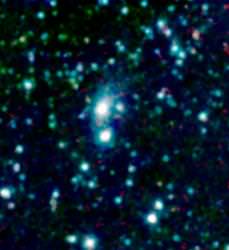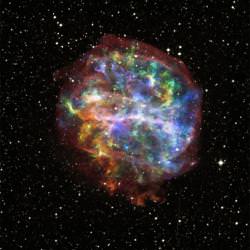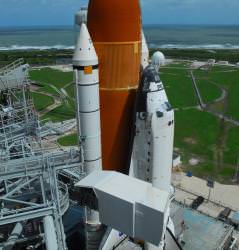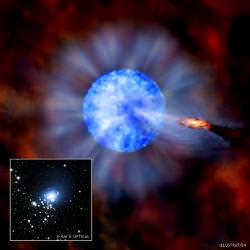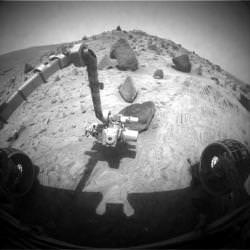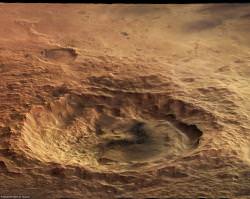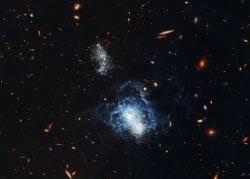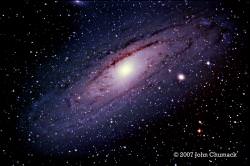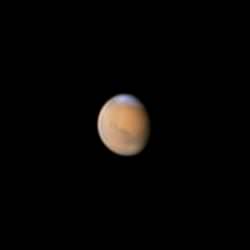Out there, in the darkness of space, a galaxy is committing a robbery. The robber, known as 3C 326 North is a galaxy the size of our Milky Way. Its victim contains about half the mass, and that’s going steadily down, because 3C 326 North is stealing some of its gas away.
The galactic interaction was revealed by NASA’s Spitzer Space Telescope. These kinds of interactions are common across the Universe; however, this is one of the clearest examples ever seen. The mass of more than a billion suns is being heated up and siphoned away, from the smaller galaxy to the larger one.
According to Patrick Ogle, a researcher at NASA’s Spitzer Space Center, “this could be an important phase in galaxy mergers that we are just now witnessing.”
Ogle and his collaborators were initially trying to study a set of distant objects called radio galaxies, located about a billion light-years away. These are named for the torrent of radio waves pouring out of the supermassive black holes at the centres of the galaxies. 3C 326 North was just the most extreme of the bunch.
When they studied the interacting pair further, they noticed it had a tail of stars, connecting the two objects together. Here’s Ogle again:
“The galaxy in question appears to be stripping a large quantity of molecular hydrogen from its neighbor and heating it up,” said Ogle. “The supermassive black hole at the center of the galaxy is digesting a small fraction of the gas and ejecting it in enormous, relativistic jets millions of light-years long.”
In the near future, the older, larger 3C 326 North will experience a second youth. The stolen gas will give it renewed pockets of star formation. The smaller 3C 326 South will have that youth stolen from it – it’ll no longer be able to form stars on its own. In the far future, the two galaxies may eventually merge, and then all will be forgiven.
Original Source: NASA/JPL/Spitzer News Release

